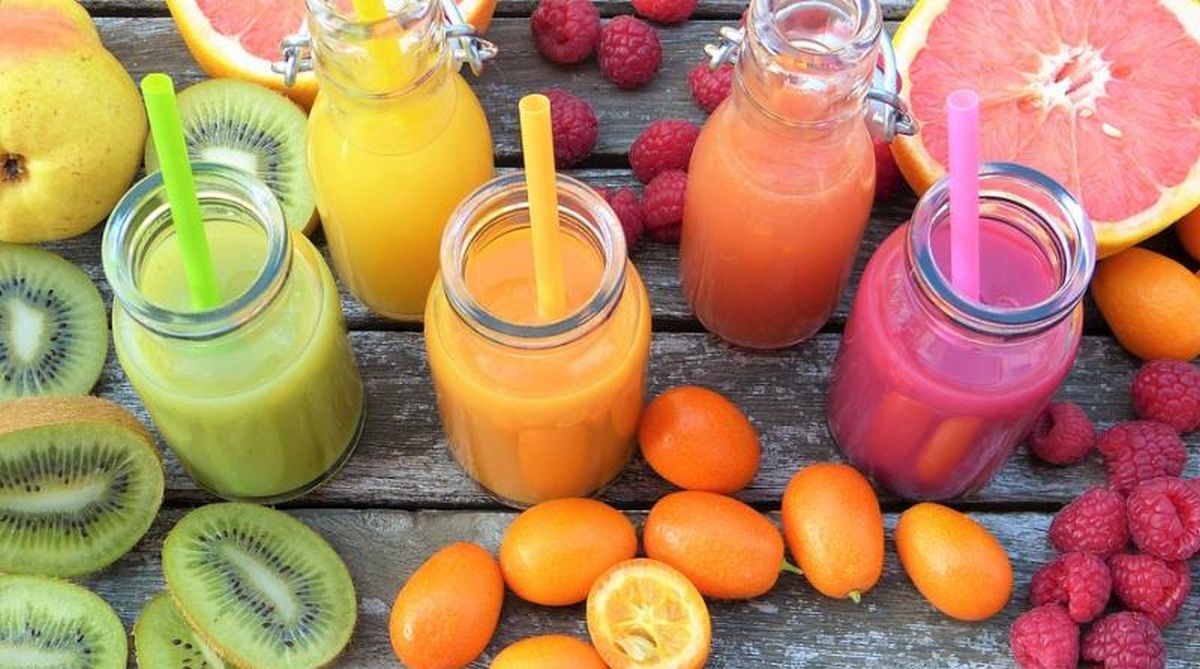Health demands
The government’s schemes with too many restrictions to make them truly inclusive by focusing only on the target groups often become utterly counterproductive.
The nutritional content of a fruit juice largely depends on the storage of fruits and the method of extraction and preservation.

Fruit Juicies(Photo Source: Twitter)
Since time immemorial, juices have received a bad rap for being too sugary, containing preservatives or being too low on nutrients. Nutritionists and scientists working specifically on juicing fruits have now discovered that these claims are nothing more than myths, and that juices can be as nutritious as the whole fruits that they come from.
According to research, the nutritional content of a fruit juice largely depends on the storage of fruits and the method of extraction and preservation. While there exist juice brands that use added sugar and preservatives in their juices, leading natural juice brands have made great strides to keep juices full of taste as well as nutrition.
Here are some ways through which the nutrition in juices is safeguarded while juicing:
Advertisement
In order to ensure that fruits are at their nutritious best when juiced, juice brands need to work closely with farmers while they grow these fruits. When fruits are ripe for the picking, the juice extracted is extremely high on the nutrient scale as well. If the fruits and vegetables are not of the best quality, the juice won’t be either. Juice brands are now laying strong emphasis on the quality of fruits that they source, conducting thorough checks throughout the growing, harvesting, preserving and juicing period.
Post-harvest management entails the storage of fruit after it is harvested. Once plucked, fruits can start losing nutrition if they are not stored and transported under the right conditions. In order to create the optimal conditions for fruits post harvesting, juice brands can ensure that fruits and vegetables are plucked at the right time, when they are absolutely ripe, and then transferred to temperature controlled environments so they do not experience any nutrient loss. Further, the fruits should be thoroughly examined before they are transferred to a juicing facility, to ensure that they are still ripe. Through quality post-harvest management, brands can ensure that juices have the exact amount of nutrients as the fruits.
Hygiene plays a major role in maintaining the nutrition levels in juices. If the fruits or vegetables are stored or juiced in a polluted environment, there are high chances of the juice being contaminated. In order to avoid such a situation, leading juice brands are now operating in cold, temperature controlled environments to avoid the growth of microorganisms. Factories are fitted with HEPA filters that trap pollutants and sanitize the environment. Juice brands go to extreme lengths to prevent fruits or juice from coming into human contact to preserve its purity and nutrient-richness. Additionally, in order to provide only the best and nutritious juices to consumers, brands are now striving to comply with global hygiene and food safety standards like FSSC 22000.
Cold extraction is a method of juicing that retains almost a hundred percent of the nutrients in juices. The method is even better than the traditional cold pressed method of juicing. While cold pressed juicing involves exposing juices to heat and pasteurization, cold extraction is a gentle way of extracting juice and pulp from fruits and vegetables. It is a pulping mechanism where the fiber content of the juice is controlled and can be increased.The juice is extracted gently in a low oxygen environment. A vacuum is applied to expunge most of the dissolved oxygen, minimizing oxidation throughout the shelf life of the juices. This way, there is no need to add harmful additives or preservatives to juices. So, the juices are high on nutrients and as pure as can be.
High Pressure Processing (HPP) is another method that is used to preserve the quality of juices. Normal fruit juices display high microbial growth within minutes of being extracted. To prevent this growth, most juice brands utilize methods such as adding preservatives or pasteurizing. These are not viable options, as they lead to the loss of nutritive value. High Pressure Processing involves applying water pressure that is over five times of what is found at the deepest end of the ocean. This eliminates any microorganisms that exist in juices, making them completely safe for consumption while retaining natural flavors, colors and nutrients.
(The author is Avanti Deshpande, In House Nutritionist, Second Nature Fruit Juices)
Advertisement